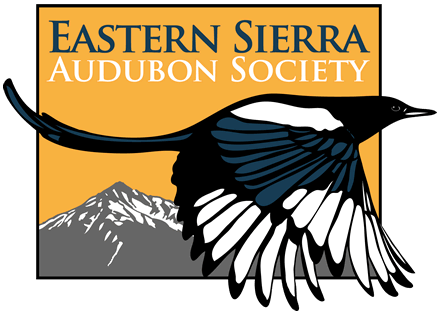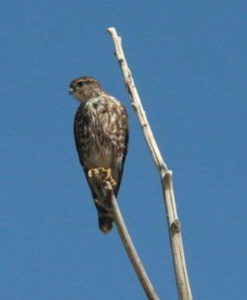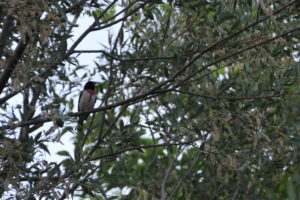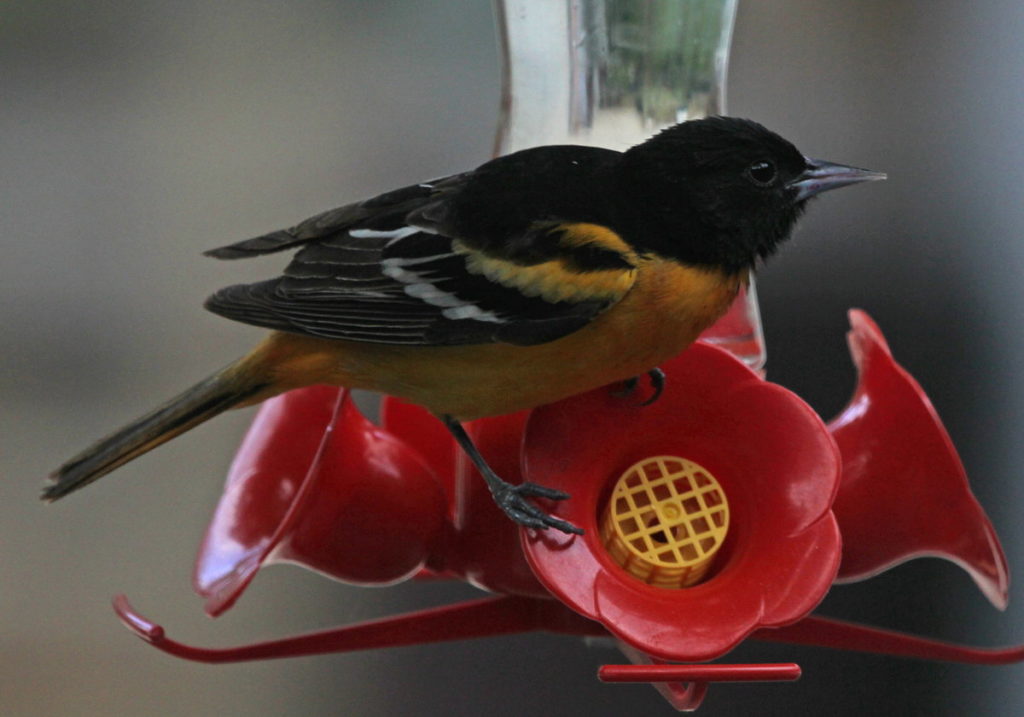A Pacific Loon was photographed at Owens Lake 18 May (SLS) for only the third spring record ever for Inyo County and a very late Merlin was photographed at Bishop Sewage Ponds 24–25 April (J&DP). Two adult Sanderlings, very unusual in Spring, were seen at Owens Lake 21 May (DJH) and a Mew Gull, only the third record in Inyo County, was photographed at Bishop City Park 26–28 March (C&RH, J&DP, SLS). It actually was found on the 25th although no documentation was received that day by the original observer.
California Gulls are not unusual finds in the Eastern Sierra but on 23 April, during an Owens Lake Big Day count, the most individuals ever documented for Inyo County were 27,545 as well as 27 Franklin’s Gulls, way more than the one or two usually recorded. Multiple party surveys provide a whole new perspective on the numbers of species in the county at one time, an endeavor impossible with just one party.Although regular in the White Mountains, Broad-tailed Hummingbird is rare on the east slope of the Sierra Nevada, thus one photographed at South Lake 2 June (C&RH) was a pleasant surprise. A Plumbeous Vireo, a regular migrant and summer breeder in Inyo County, was photographed and well documented at Stovepipe Wells on 20 April (C&RH) for the earliest ever Spring arrival in our area and a Red-eyed Vireo was photographed in Bishop 1 June (C&RH).
The famous Curve-billed Thrasher is striving to become an Inyo County Resident! On 11 June, Rick and Karen Scott, the original finders, celebrated the one-year anniversary by walking Starlite until they found the bird and photographed it – three hundred and sixty-five days after their first image!
As hoped for, many warblers from The East had gyroscopic malfunctions and ended up in Inyo County. An Ovenbird and a Northern Waterthrush were at Wildrose Ranger Station 20 May (ADeM). A Tennessee Warbler was at Birchim Canyon 27 May (C&RH) and a Virginia’s Warbler was at Pine Creek 31 May (J&DP). A Black-and-white Warbler, and photographed Tennessee and Blackpoll Warblers were at Scotty’s Castle 31 May (DVP, LBH).
Four Rose-breasted Grosbeaks (SLS, ADeM, LBH & DVP, RDK) and four Indigo Buntings (C&RH, PJM, DVP) added their vibrance to the spring as well as a male Baltimore Oriole who hung out in Big Pine posing for pictures 6–8 May (authors). Finally, two Lawrence’s Goldfinches were seen with a male in Big Pine 13–20 March (T&JH) and another male in Bishop 1 May (RCH) and the only Evening Grosbeak was a female photographed in Bishop 13 May (C&RH).More and more birders are using the digital age to validate their claims, insuring that there is evidence to substantiate their sighting. Any image, regardless of quality, that provides unequivocal characteristics of the bird that insure its conclusive identity, is an A+ image. Some may not qualify for a magazine cover, but they are far more important than that. Our gratitude to the following for making the effort to insure that their sightings qualify as county records: Al DeMartini (ADeM), Chris & Rosie Howard (C&RH, RCH), Debbie House (DJH), David Vander Pluym (DVP), Jim & Debby Parker (J&DP), Lauren Harter (LBH), Peter Metropolis (PJM), Russell Kokx (RDK), Susan Steele (SLS).
We solicit your help in making each seasonal report more complete so consider submitting reports of interesting and unusual sightings of rare or very rare species, along with documentation and/or images to tjheindel@gmail.com. Information on which birds need extra documentation, and how and when to submit, is on our Inyo Bird Checklist page.
Tom and Jo Heindel have contributed a vast amount of their knowledge to the Wave Newsletter over the years (from 1993 on!). Those articles have been archived for reference, here: Heindel’s articles and season highlights.
Tags: gulls, oriole, thrush, vireo, warbler, wren





